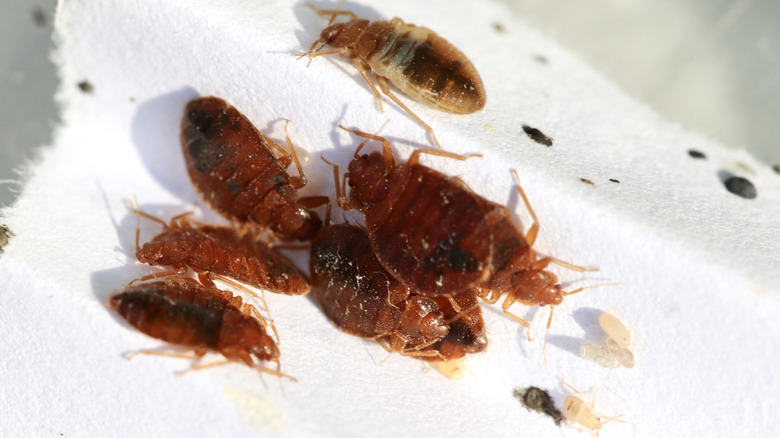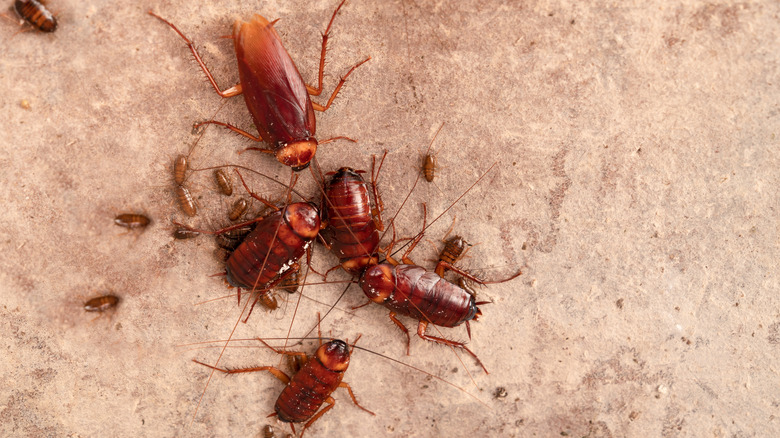Bedbug Or Cockroach? Here's How To Tell The Difference
In the murky world of household pests, few evoke as much dread and discomfort as the bedbug (family Cimicidae) and the cockroach (order Blattodea). These tiny invaders can be a nightmare for homeowners, causing anxiety, sleepless nights, and in severe cases, significant damage to property and health. One of the challenges in dealing with these invaders is that they can sometimes be mistaken for one another, especially in their early life stages. So, how do you tell them apart? You can distinguish bedbugs from cockroaches by considering various features or characteristics, such as their appearance, lifecycle, size, habitat, and food sources.
Both bedbugs and cockroaches are common household pests, thriving in warm, humid environments. They share a nocturnal lifestyle, emerging under the cover of darkness to feed on unsuspecting hosts or scavenge for food crumbs. Both pests undergo similar lifecycles, starting as eggs and developing into nymphs (5 nymphal stages for bedbugs and several molts for roaches), before finally reaching adulthood. However, despite these similarities, there are key characteristics that set them apart. This is important, because knowing the differences between bedbugs and cockroaches is crucial for effective pest control and prevention.
Bedbugs and roaches – distinguishing features
One of the most significant differences between bedbugs and cockroaches lies in their appearance. Bedbugs are reddish-brown, flat, oval-shaped insects, whereas cockroaches are typically darker in color and have a more elongated body shape. In terms of size, bedbugs are relatively small, reaching only about 4-7 millimeters in length, while cockroaches can grow much larger, some species reaching lengths of over an inch. Lifespan also varies between the two pests, with bedbugs living for several months to a year, whereas certain types of cockroaches can survive for up to two years.
Bedbugs are masterful hitchhikers, often stowing away in luggage, clothing, or used furniture to gain access to new environments. Once inside a home, they seek out warm, secluded spaces close to their human hosts (or other warm-blooded animals) for easy access to blood meals. Common hiding spots include mattresses, bed frames, cracks in walls, and upholstered furniture. Cockroaches are highly adaptable insects that can thrive in a wide range of environments, from homes and restaurants to sewers and garbage dumps. They're attracted to warm, humid areas with easy access to food and water, making kitchens, bathrooms, and basements ideal habitats. Roaches rarely target and bite humans. They are scavengers by nature, feeding on a variety of organic matter, including food scraps, grease, soap residue, and even glue.
Differences in signs of infestation and control measures
Detecting an infestation of either bedbugs or cockroaches requires a keen eye and attention to detail. Signs of a bedbug infestation in your home include small reddish-brown (blood) stains on bedding, shed skins, tiny white bedbug eggs, a distinctive musty odor, and clustered bite marks on your skin or other family members. Cockroach pest infestations may be indicated by droppings, the presence of egg cases, and a strong, unpleasant smell. Unlike bedbug infestations which may be harder to detect, the presence of cockroaches is easier to verify, as these pests often venture out in search of food and water, even with humans around.
Effective pest management strategies differ for each insect, although decluttering to remove hiding spots can help with managing both bedbugs and roaches. To get rid of bedbugs, thorough cleaning (including the use of heat), vacuuming, the proper disposal of affected bedding and furniture, and professional insecticide treatment are essential. Cockroach control requires sealing entry points, removing food and water sources, and using baits or traps to eliminate existing populations. In severe cases, professional pest control services may be necessary to eradicate the infestation completely. So, while bedbugs and cockroaches may share some similarities, understanding their distinct characteristics becomes easier when you look closely and observe. By familiarizing yourself with the differences between these critters and knowing the signs of infestation, you can take proactive steps to protect your home from these unwelcome intruders.



